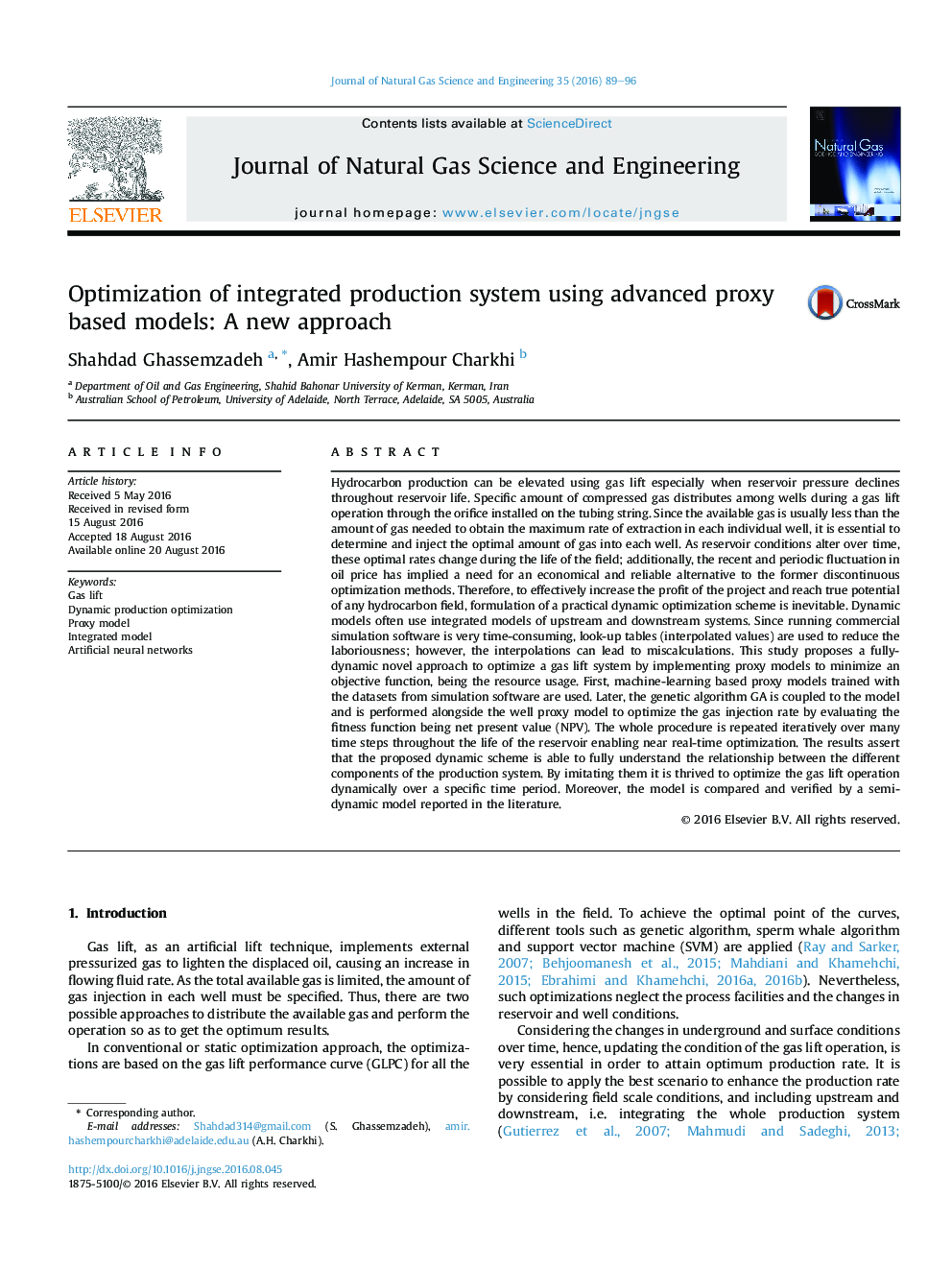| Article ID | Journal | Published Year | Pages | File Type |
|---|---|---|---|---|
| 1757004 | Journal of Natural Gas Science and Engineering | 2016 | 8 Pages |
•A dynamic approach to optimize a gas lift system using proxy models is presented.•Proxy models are created by implementing artificial neural networks.•Proxy models coupled with genetic algorithm to create a dynamic optimization scheme.•Proposed continuous model is compared to the previous discontinuous model.
Hydrocarbon production can be elevated using gas lift especially when reservoir pressure declines throughout reservoir life. Specific amount of compressed gas distributes among wells during a gas lift operation through the orifice installed on the tubing string. Since the available gas is usually less than the amount of gas needed to obtain the maximum rate of extraction in each individual well, it is essential to determine and inject the optimal amount of gas into each well. As reservoir conditions alter over time, these optimal rates change during the life of the field; additionally, the recent and periodic fluctuation in oil price has implied a need for an economical and reliable alternative to the former discontinuous optimization methods. Therefore, to effectively increase the profit of the project and reach true potential of any hydrocarbon field, formulation of a practical dynamic optimization scheme is inevitable. Dynamic models often use integrated models of upstream and downstream systems. Since running commercial simulation software is very time-consuming, look-up tables (interpolated values) are used to reduce the laboriousness; however, the interpolations can lead to miscalculations. This study proposes a fully-dynamic novel approach to optimize a gas lift system by implementing proxy models to minimize an objective function, being the resource usage. First, machine-learning based proxy models trained with the datasets from simulation software are used. Later, the genetic algorithm GA is coupled to the model and is performed alongside the well proxy model to optimize the gas injection rate by evaluating the fitness function being net present value (NPV). The whole procedure is repeated iteratively over many time steps throughout the life of the reservoir enabling near real-time optimization. The results assert that the proposed dynamic scheme is able to fully understand the relationship between the different components of the production system. By imitating them it is thrived to optimize the gas lift operation dynamically over a specific time period. Moreover, the model is compared and verified by a semi-dynamic model reported in the literature.
